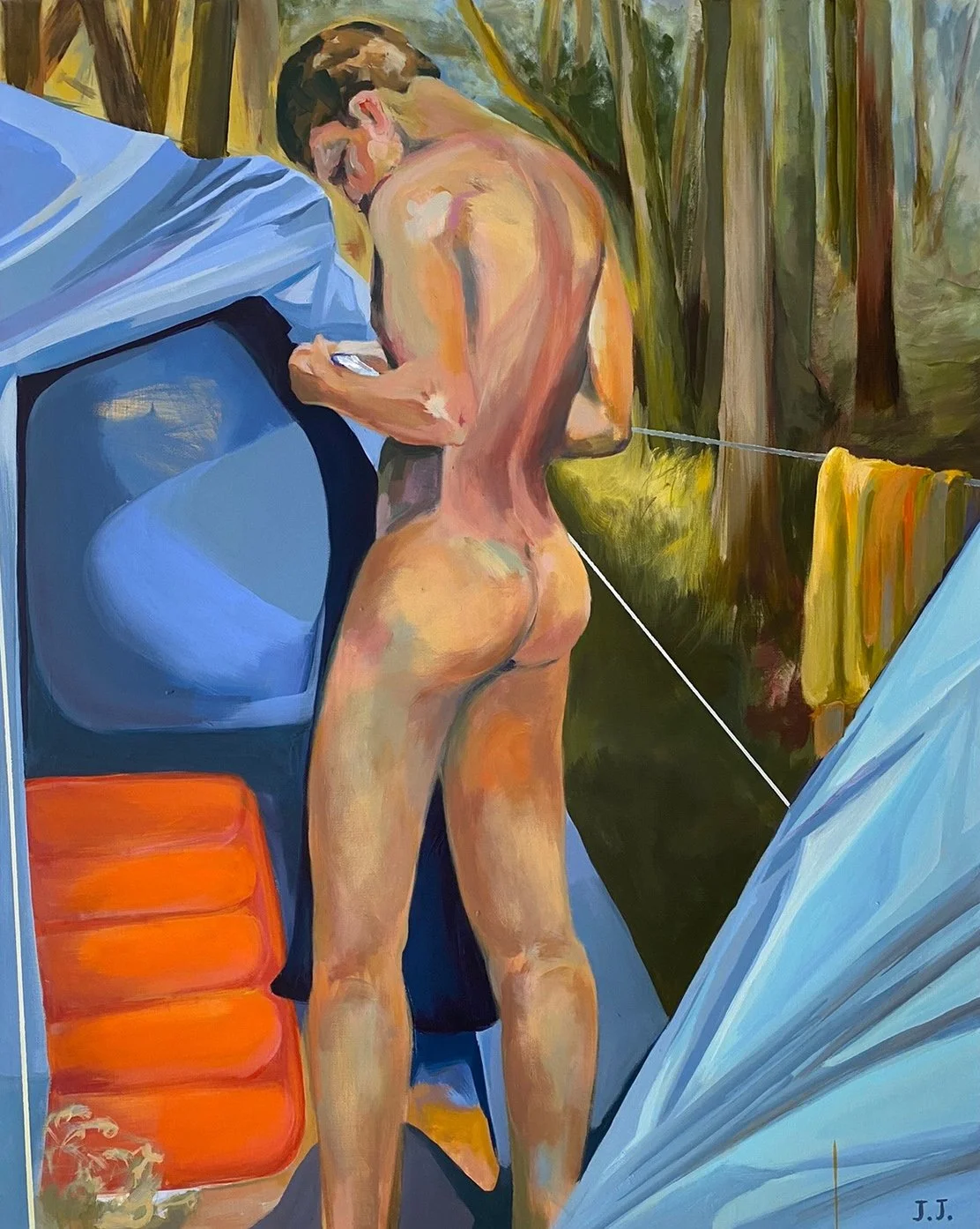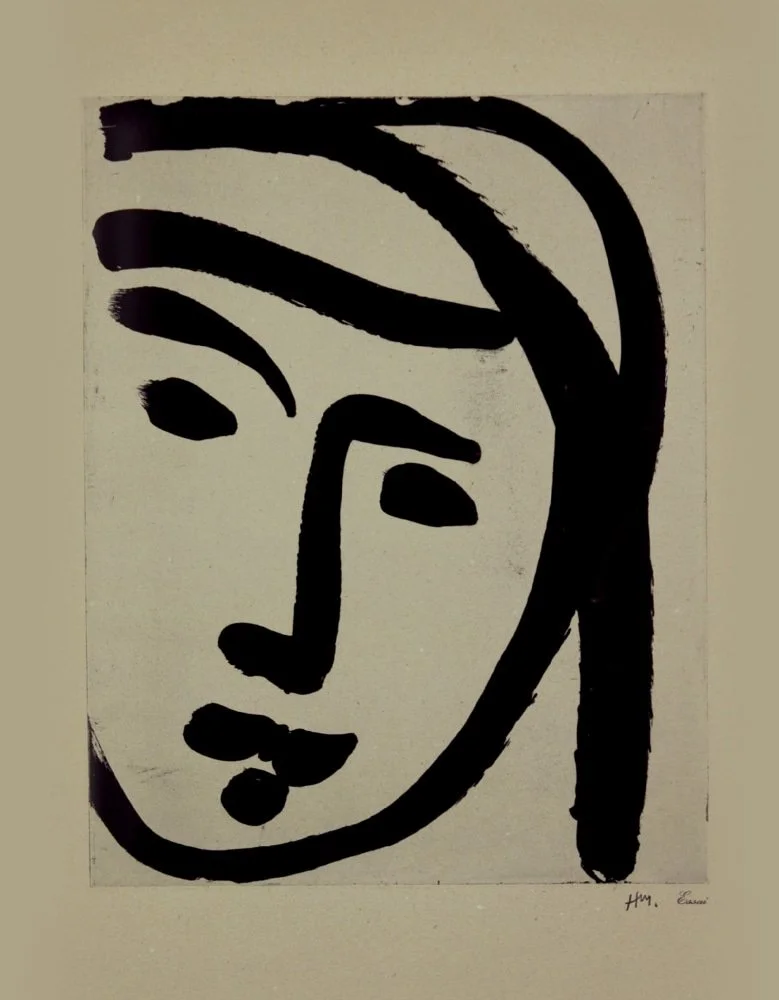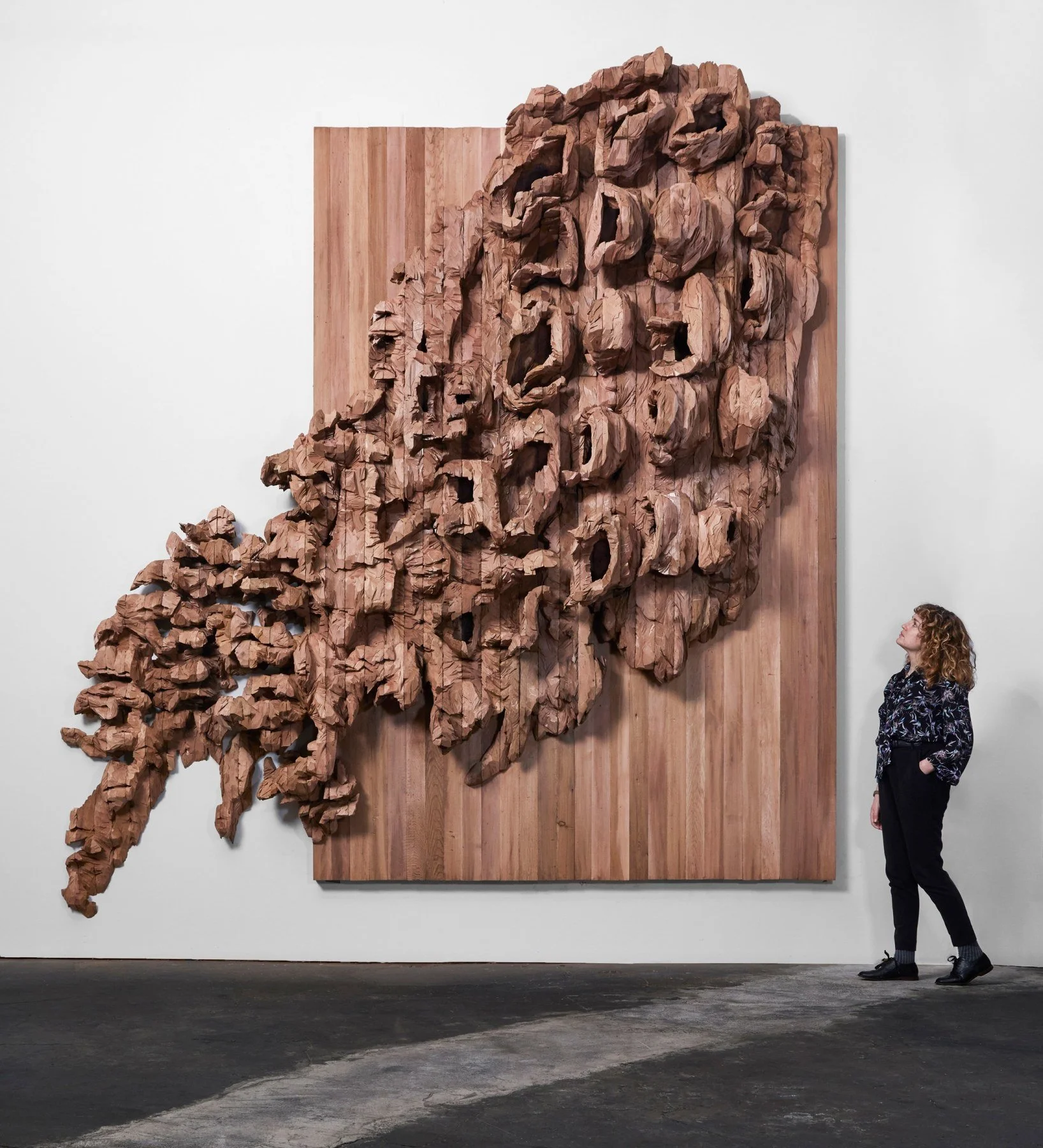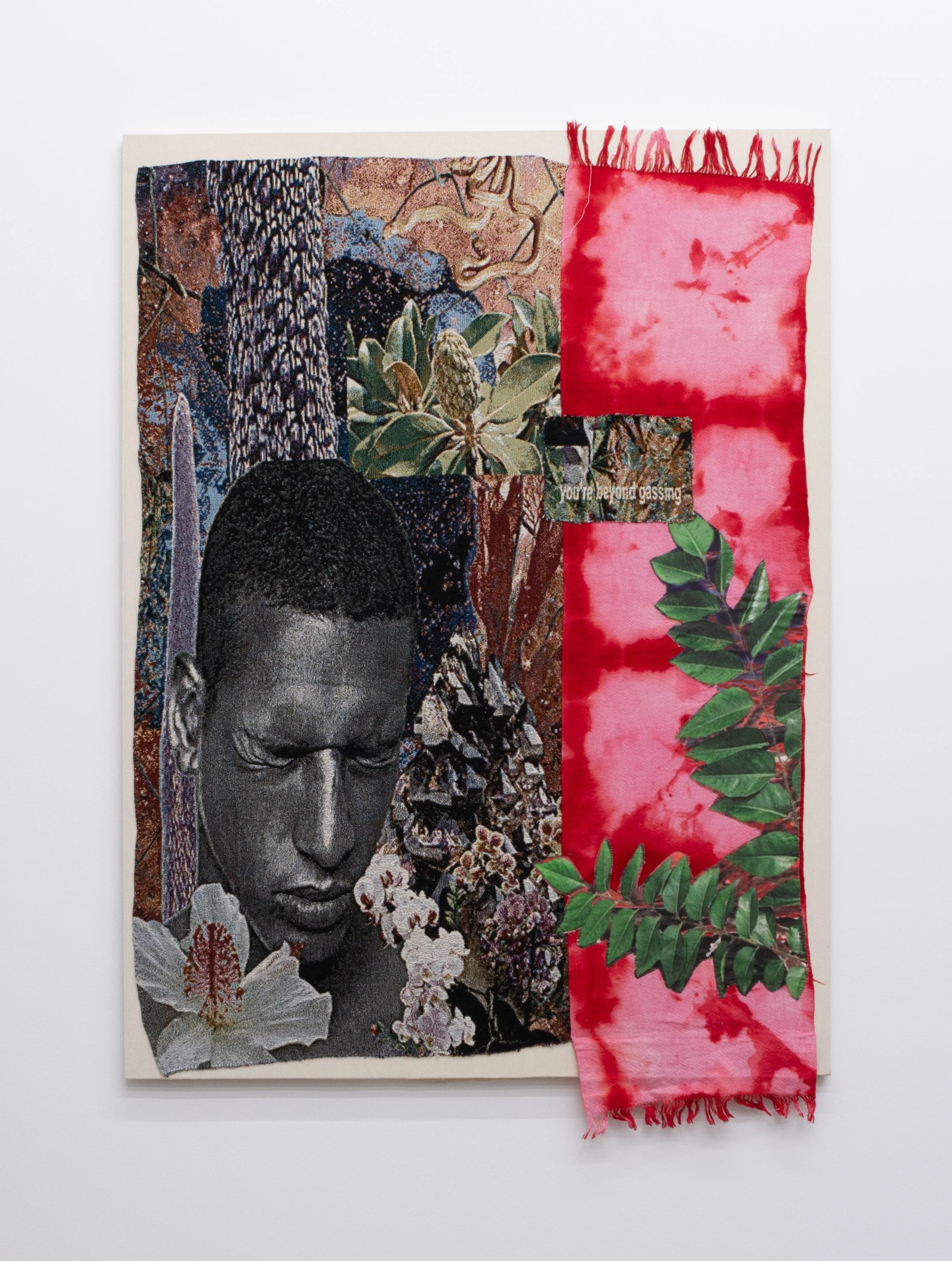Jeremy Jaspers
“Other Voices, Other Rooms”
New York, 245 Tenth Avenue
Through his evocative, sensual tableaux, Jeremy Jaspers (b. 1977; Berlin, Germany) investigates psychological conflict, economies of desire, and the dynamics of queer love. His intimate portraits and carefully arranged figurative compositions present men in the throes of love affairs, privately lazing in the safety of secluded rooms, or meandering covertly through the dim corridors of old cities. Through thinly veiled windows, doors left ajar, alleyways, and computer screens, viewers of Jaspers’ work are made voyeurs into the private lives of contemporary urbanites, queer existence, and underground communities.
Eau Sauvage 2021 Acrylic on Canvas 55 1/8” x 72 7/8” (140 x 185 cm)
Jaspers is profoundly influenced by the work of Truman Capote, whose novel Other Voices, Other Rooms lends this exhibition its title and tells the tale of a teenage boy sent to live in his long-lost father’s mysterious manor, where he discovers much about his sexuality and himself. Like Capote, Jaspers takes an interest in the pivotal points of a person’s life when transformation occurs, be it the realization of one’s sexuality, the requital of a romantic proposition, or the first time the ego is wounded. The artist gives expression to the subtle aftereffects of these experiences, painting men who are forced to walk the line between proud display and careful concealment of their true identities. Jaspers’ palette reflects this conflict, oscillating between the moody tones of a dark city street and the bright, vibrant colors of a dance club. Both are employed in Kingdom hearts III, which presents three young men in a darkened room, two of whom embrace passionately beneath a shimmering disco ball, while the third sits dejectedly on a vibrantly colored sofa, absentmindedly gripping a video game controller. The competing emotions at play—lust, boredom, excitement, jealousy—are paramount to Jaspers’ painterly investigation of queer life today.
Included in the exhibition is Jaspers’ largest work to date, reclining nude, a permutation. At nine by fifteen feet, the monumental painting presents a reclining nude sprawled out in the steamy enclaves of a bathhouse, poised elegantly in the style of an odalisque. Looking at the work of Jean-Auguste-Dominique Ingres, Jaspers renders his subject with supple curves and soft brushstrokes. Here, however, Jaspers settles his gaze on a man rather than a woman, upending the male gaze and conventional modes of desire that pervade the western art historical canon. The subject’s setting recalls the ancient classical tradition of bathhouses, and by extension, the tolerant attitudes the ancient Greeks and Romans held towards homosexuality. These bathhouses were sites of bathing and relaxation, but also of socializing and even romantic liaisons. Today, they serve a similar function for modern gay communities: safe spaces where men can gather and be intimate without fear of persecution. With soft blues and purples, the artist builds a dreamy, almost surreal space for his subject, whose spotted skin indicates the dermatological condition of vitiligo. Jaspers takes interest in the condition not only for its striking beauty, but also for what it represents to him: the endless combinations of circumstances that define a person. A similar pattern can be seen in the mosaic wall behind the subject: a matrix of multicolored tiles where endless combinations are possible. With this intricate wall, Jaspers nods to the infinitely diverse possibilities that constitute life today. In reclining nude, a permutation Jaspers delineates a space where all variations of experience, appearance, and identity are valid. Throughout his practice, the artist celebrates the differences that might normally subject one to social ostracism, giving them visibility and dignity in his paintings.







